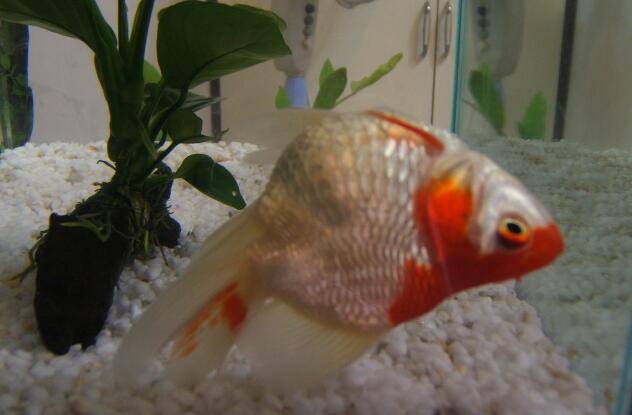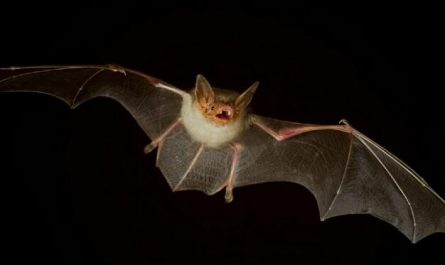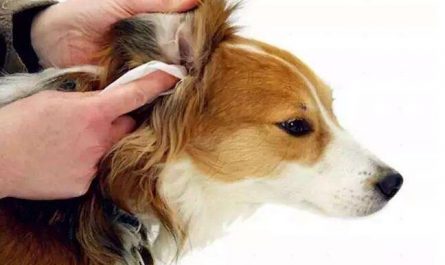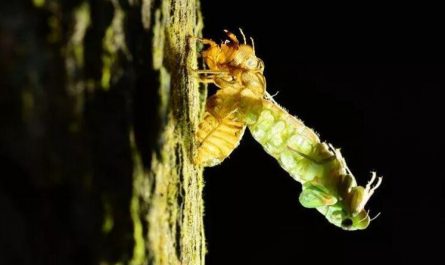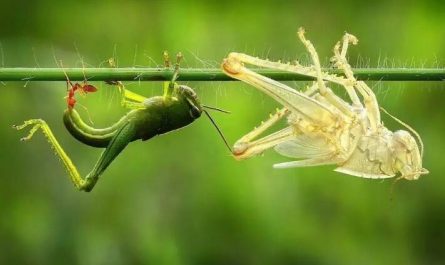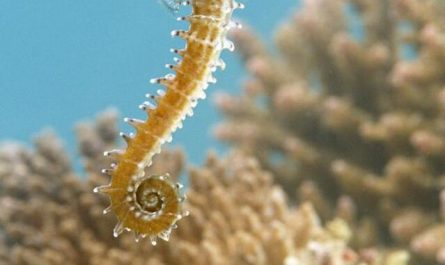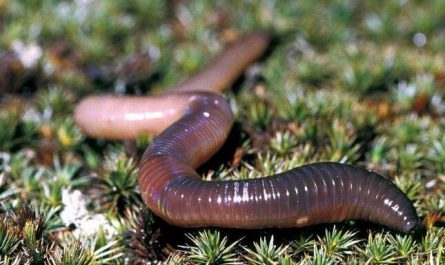The reason why dead goldfish turn their stomachs
When the fish dies, the body loses control and cannot maintain a balanced state. The swim bladder is on the abdomen, naturally turned upside down. In the fish’s body, there is an organ called the swim bladder that regulates the proportion of the body. It can deflate or inhale at different depths to adjust the specific gravity of the body, making it the same as the specific gravity of the surrounding water, so that the fish can stay in the water effortlessly. After the fish dies, it loses the ability to adjust and the swim bladder is full. With gas, the proportion of the body is reduced. The back of fish is mostly where there are more vertebrae and muscles, and the proportion is larger, while the abdomen is mostly internal organs with a large cavity and a smaller proportion. Therefore, after the fish dies, the abdomen with a smaller proportion will face upward.
What should I do if the goldfish turned his belly but didn’t die
1. Don’t rush to feed artificial feed for goldfish just purchased. At the beginning, some fresh water fleas were fed. After a week, the goldfish had adapted to the new environment, and the physique was restored before starting to feed a small amount of artificial feed. Try to use flakes as the feed, which has strong water absorption and is not easy to expand again in the goldfish intestines, causing constipation. Pellets can be smashed with a hammer before feeding. Powder feed is not recommended because it is easy to oxidize and deteriorate. When feeding, use as little to as much, and observe the feces of the fish frequently. If there is no feces or white feces appear, the feeding should be suspended for a few days.
2. It is best to feed goldfish alternately with live bait and artificial feed, and interspersed with green feed. In a sunny breeding place, goldfish can eat the moss attached to the tank wall by themselves. In aquarium breeding, you can put plant feed patches on the tank wall for goldfish to eat at will. It is best to buy artificial feed specially developed for goldfish to prevent the imbalance of nutrients.
3. Before changing the water to the aquarium, place the new water near the aquarium and measure the water temperature with a thermometer. After confirming that the water temperature is consistent, change the water again. Pay attention to the maintenance of water quality on weekdays (see the author’s previous article), so that goldfish have a comfortable living space, and a strong physique can resist viruses and germs.
4. For those who are new to raising goldfish, when choosing goldfish species, it is best to start with general species and choose grass goldfish and dragon eye species for raising. These breeds can be adapted to more general feeding methods. Don’t choose rare breeds that are too stubby.
For goldfish that have been ill, they need to be kept separately or in small net cages floating on the water. The water level should not be too high, as long as the fish can be covered. If the water temperature is below 20 degrees and the isolated water tank is not too small, there is no need to use oxygenation facilities to reduce the energy consumption of passive swimming of goldfish. And add one-thousandth of coarse salt to the water to inhibit the growth of bacteria in the water. And slowly increase the water temperature to above 15 degrees. In the early stage of illness, you can change to feed some green fodder, such as small duckweed.
Goldfish may not like to eat at first, but after 2-3 days of stopping feeding other feeds, goldfish will get used to it. Generally, the goldfish can return to normal in about a week. For goldfish that are unbalanced due to gastrointestinal obstruction, refer to the treatment of enteritis. For severely ill fish, if they are lying on their side on the water surface, a small syringe can be used to insert the swim bladder from the side of the body to extract part of the gas. Reduce symptoms. (This operation must be very familiar with the anatomy of different goldfish species, and it is risky.)
For sick fish lying on the side of the water, you can tie foam plastic on the dorsal fin to make the sick fish stand upright in the water. For egg-bred fish without dorsal fins, small net cages can be used to isolate the bottom of the tank. After the above treatment, the life of severely ill fish can be extended for about one year at most.
Goldfish growth and reproduction
Generally speaking, females have a larger belly during the spawning period, and there is no change in the males. However, careful observation is not difficult to find that there are several small white spots on the front hard bones of the left and right front fins of the male fish, especially during the spawning period, while the female fish absolutely does not.
In addition, during the spawning period, the male fish always chases and bites the tail of the female fish. At this time, it is about to lay eggs. The pair of fish should be placed in a tank separately, with a little more water weeds in the tank to lay eggs. It can adhere to the water plants, otherwise the fish eggs will sink to the bottom and be eaten by the fish. After spawning, the female fish should not be polycultured with any male fish for the time being, and let it rest well to protect the female fish.
Put the aquatic plants with milky white fish eggs in a fish tank with fish water (preferably a crock), and place it in a place where the sun can shine. The breeding season of goldfish is at the turn of spring and summer each year. The southern part of our country is 1-2 months earlier than the northern part, spawning occurs between March and April in the south, and spawning from the end of April to the end of June in the north. Goldfish usually mature and spawn in one year, which means that they can reproduce one generation a year. If the temperature is increased in winter and the breeding and management are strengthened, goldfish can lay eggs in advance in the severe cold winter when they are 7-8 months old, and it does not have to be 1 year (12 months old) to lay eggs and reproduce. Goldfish can lay eggs multiple times during the breeding season. About once every one or two weeks, can produce 2-3. Wherever it is irradiated, small fish will hatch in about a week.
How to change water for raising goldfish
(1) Under normal water changes, especially hot summers, just stick to the feces and dirt at the bottom of the fish pond (tank) together with the old water every day, and gently suck out 1/10-1/5 with a hose to clear the water surface Dust and feces floating up, then slowly inject new isothermal water along the pool (cylinder) wall to keep the water clean. This water change method is not easy to damage the fish body, the method is simple and safe, and is most suitable for household fish tanks or small pond fish farmers.
(2) Partial water change This water change method is mainly carried out in two situations. In one case, in the hot summer and early autumn, the feed water in the fish pond (tank) has not changed for a few days, and the water color turns green very quickly (due to the small amount of feed), and the water quality is still clean, in order to prevent Goldfish hot tails, so you can fish out all the goldfish in the pond (tank), and then turn the water in the pond (tank) into a spiral shape. After a while, remove the dirt in the center of the pond (tank) and Chen. Use a rubber tube to suck 1/3-1/2 of the water, and then inject the same temperature and the same amount of new water, and then fish the goldfish into the original pond (cylinder) for breeding.
Another situation is that the water in the pool (tank) has not been changed for a few days, and the color of the water is still good, but because of the excessive feeding of the day and the floating head, emergency measures must be taken. The method of changing the water is the same as mentioned above.
If it is a large fish pond in a fishing ground, you don’t need to fish out the goldfish. Instead, use a folding net to surround the fish fence. Then gently rotate the water in the pond with the fishing net for several tens of seconds. Wait for the water to stand still for a while and then start. Drain the water slowly or use a straw to suck out the excess fish and insects, feces and old water in the center of the pond (cylinder), or use a fishing net to remove the excess fish and insects from the center, and then put in 1/4-1/2 The old water is injected with the same amount of new water at isothermal temperature at the end. This method is commonly used in fish farms or households when they eat too much food.
(3) Thorough water change This type of water change is often combined with turning over the pond (tank) and selecting young or adult fish at the same time. It is often used when the water quality is severely deteriorated or the moss is too long and the fish is too dense. There are two specific methods:
1. When there is no free pond, all the goldfish have to be fished into the basin or the cage is placed in the water of the adjacent pond for temporary cultivation, and the aeration head is added to the basin or the cage to increase oxygen. Then, brush off the moss on the original pond wall, rinse thoroughly, refill with new isothermal water, and let it stand for a while until the water temperature is equal, then fish into the original pond (tank).
2. If there is a free pool and new water, just pick all the goldfish into the basin or cage, and select and deal with them separately. The sub-pool of the sub-pool, regardless of the pool, can be moved into the new after the water temperature is equal. Raised in water. This kind of water change method should pay special attention to the water temperature, and it is best to choose the sunny day before 9 o’clock in the morning. However, this method is generally only suitable for adult fish or larger juvenile fish, not for larvae. If conditions permit, before completely changing the water, fill the reserve tank (tank) with water first, and then fish directly into the reserve tank (tank). In this way, the water temperature change is small, the fish school can easily adapt to the new environment, and the fish will be free from the pain of squeezing in the basin or cage. This method of water change is generally performed every half a month or so in spring and autumn. In summer with heavy weather, the water temperature is as high as 28℃, and the water color is easy to be dense and the water quality is easy to be turbid. Generally, the water should be completely changed once in 4-7 days. In winter, the water temperature drops to about 4℃, goldfish activities are slow, appetite is reduced, the water quality is not easy to spoil, and generally do not change the water without special circumstances.
It should be noted that due to differences in density, body size, feed, feeding habits, and water quality maintenance equipment, the method of changing water should not be too dogmatic. It should be adjusted appropriately according to the water quality and the state of the fish. All these require long-term accumulation of experience in fish farming.
